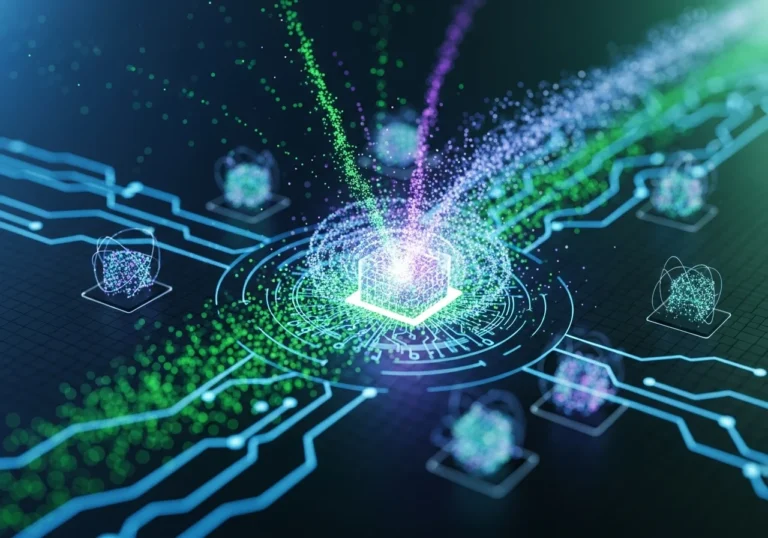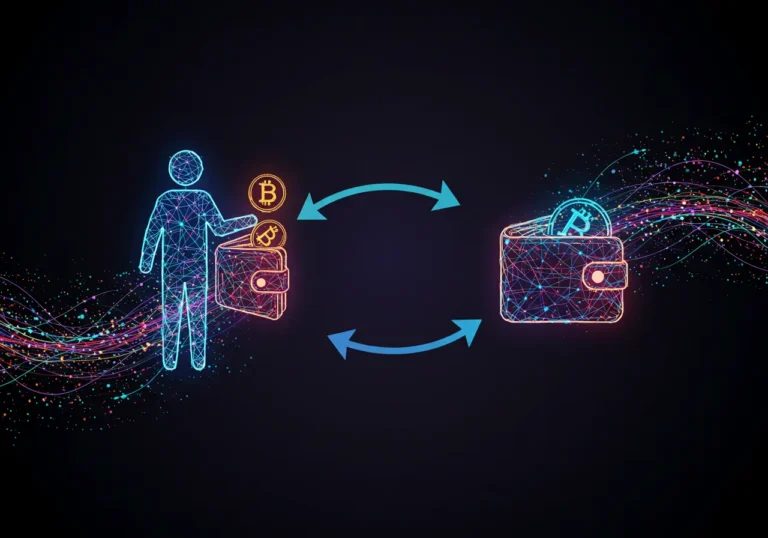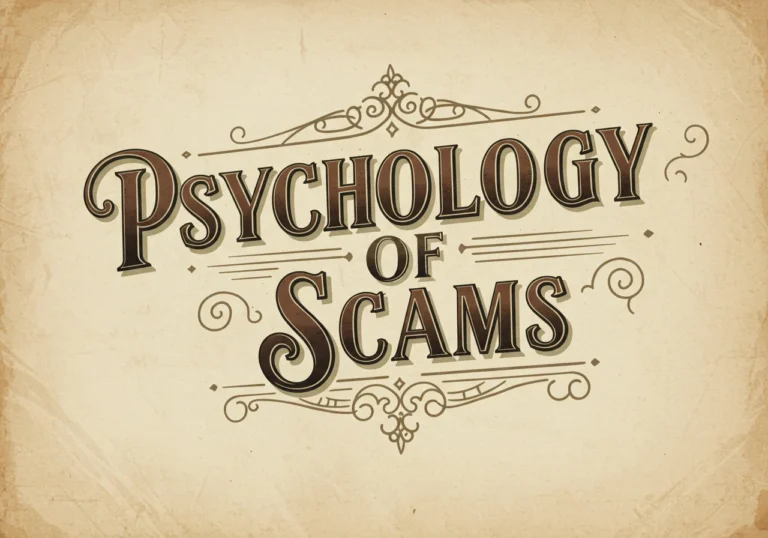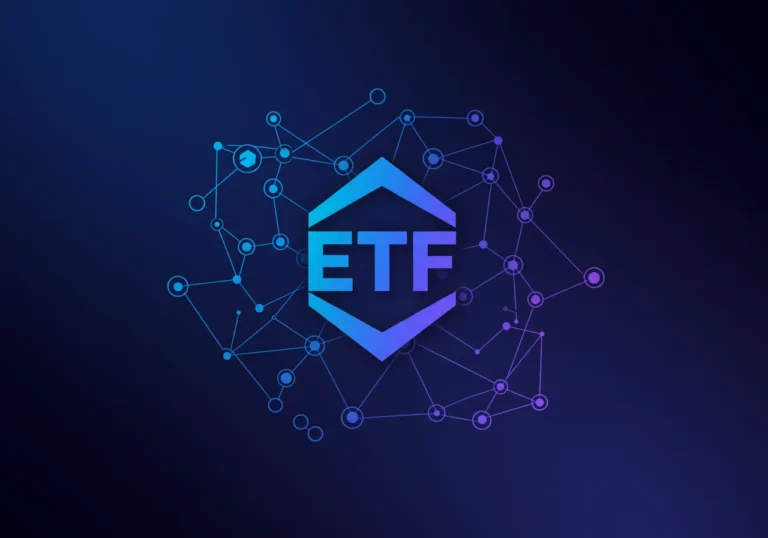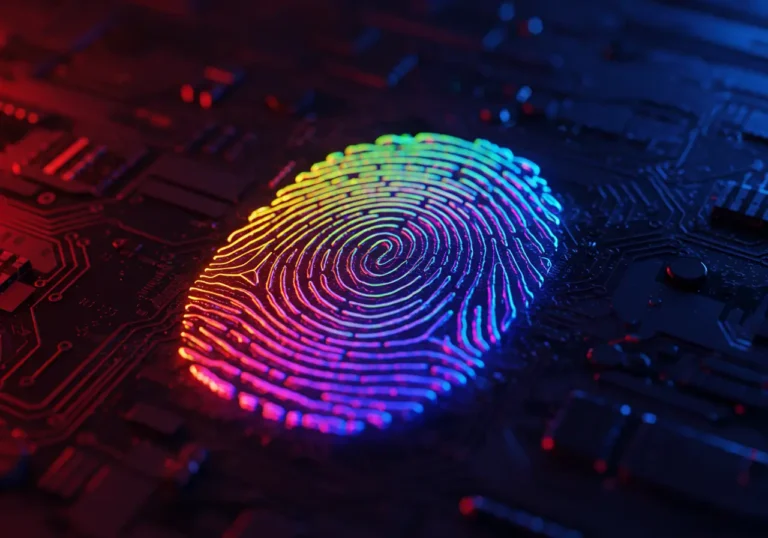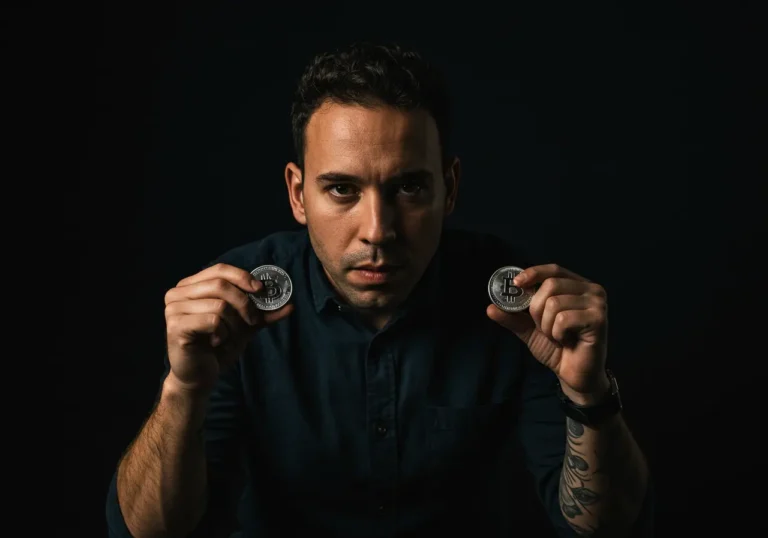Blockchain Explained: A Beginner’s Roadmap to Understanding the Technology
Ever imagined being able to send money to someone in Japan within minutes—no paperwork, no long bank forms, and no outrageous fees? It might sound like wishful thinking, but it’s very real.
This is happening right now. Every day, thousands of people are moving money across borders quickly and efficiently. And the tech making it possible isn’t some futuristic fantasy—it’s blockchain.
Maybe you’ve heard about Bitcoin on the news. Or a colleague mentioned these “cryptocurrencies.” You might have even seen something about NFTs on Instagram. Did you know all these things use the same technology behind them?
When I started studying this, I’ll admit I felt lost. It seemed like something from another world. But after I understood it, I realized it’s much simpler than I imagined. And the best part: it’s changing how we do business, how we buy things, how we trust each other.
Come with me and I’ll explain all of this in a way you’ll understand perfectly.
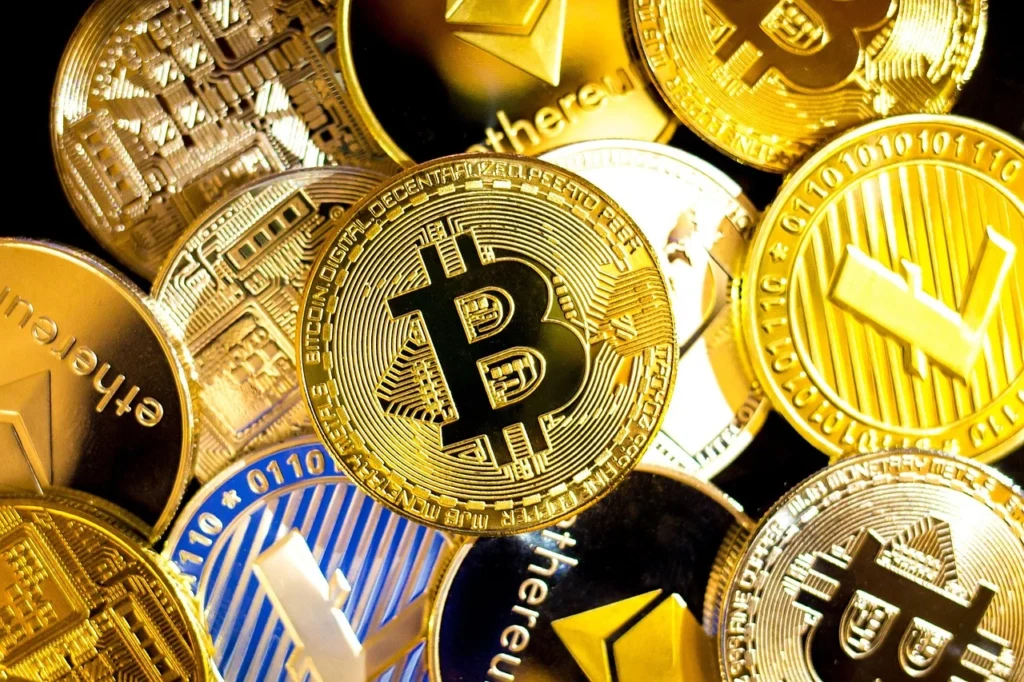
Blockchain: What is This Revolutionary Technology?
Imagine a notebook where you write down everything you spend. Every purchase, every dollar that comes in, every cent that goes out. Now imagine this notebook was copied to 10,000 different people. Every time you want to write something new, you need approval from the majority of these people.
Sounds complicated? Actually, it’s genius.
This is blockchain in practice. It’s like a big digital record book that’s spread all over the world. Nobody can erase or change what’s already been written. And everyone can verify if the information is true.
The word blockchain comes from English: “block” + “chain.” It’s literally a chain of information blocks. Each block stores important data and is connected to the previous one. If someone tries to mess with one block, the entire chain becomes “broken” and everyone notices.
How Does It Work in Real Life?
Let’s say you want to send $500 to your sister in another city. In the traditional system, you’d open your banking app, make the transfer, and done. But behind the scenes, the bank would check if you have the money, process the transaction, and update the balances.
With blockchain, it happens like this:
- You announce: “I want to send $500 to Ana”
- Thousands of computers verify if you actually have this amount
- If everything’s correct, they approve the operation
- The money is transferred and this information is recorded forever
- Now everyone knows you sent $500 to Ana
Simple as that. Just much safer.
Why is Blockchain So Secure?
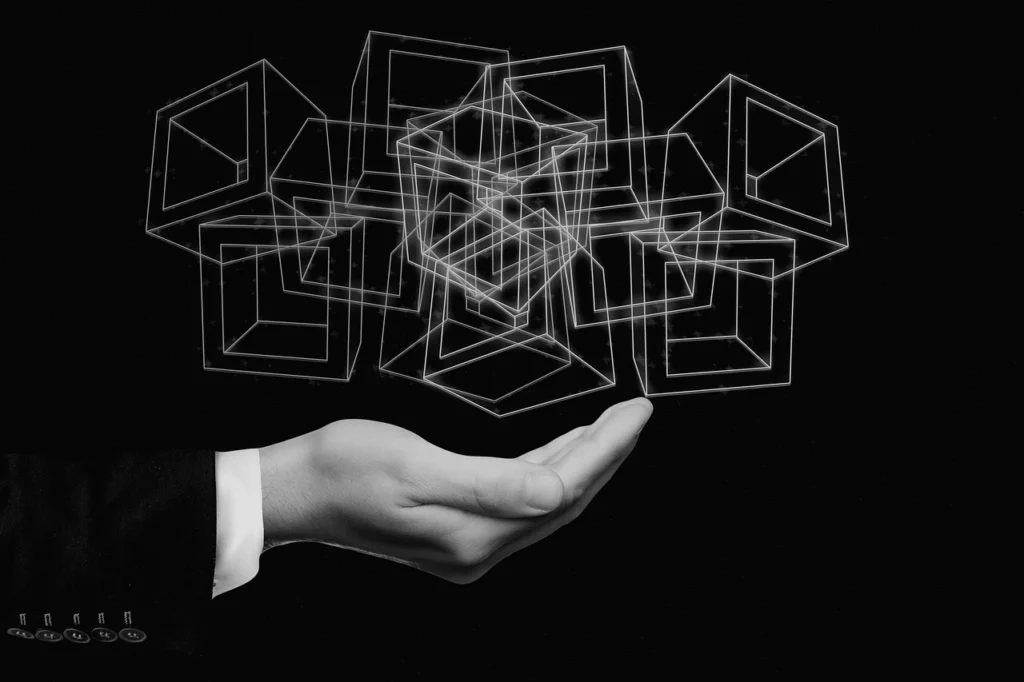
Here’s the key point. Blockchain security is one of the most impressive things about this technology. But why is it so hard to hack?
No Single Point of Failure
Think about your bank. All the information is stored on their computers, right? If a hacker manages to get in there, it could cause quite a mess. It’s like having all your belongings stored in just one house – if someone breaks in, you lose everything.
Blockchain is different. Information is spread across thousands of computers worldwide. For something to go wrong, a hacker would have to invade more than half of them at the same time. It’s practically impossible.
Each Piece Depends on the Other
Remember the chain of blocks? Each block has a “fingerprint” of the previous block. If someone tries to alter old information, this fingerprint changes. Then all the following blocks become “disconnected” and the entire system realizes something is wrong.
It’s like having a gold chain and someone trying to replace one link with iron. Anyone looking would see there’s something strange there.
Everyone Can Verify
Here’s where it gets interesting. All transactions are public. Anyone can go in and see what’s happening. You can’t hide anything.
Imagine if government accounts were this transparent? It would be much harder to have corruption, wouldn’t it?
Understanding Distributed Ledger Technology
This name might sound scary, but distributed ledger technology is just a fancy way of talking about how blockchain works.
A ledger is where you record your finances. “Distributed” means it’s spread across various places. Simple as that.
How It Was Before
Before, when you wanted to transfer money, you had to trust the bank. They had all the power. They could approve or deny your transaction. They could even “lose” your money (it’s happened to many people).
It was like having to ask permission to use your own money.
How It Is Now
With this distributed technology, we no longer need to trust just one institution. The power is in the hands of thousands of people. It’s democratic. It’s fair.
If John’s bank has a problem, the other 9,999 computers keep working normally. The system doesn’t stop.
Blockchain and Digital Currencies
Here comes a topic that makes many people curious: decentralized cryptocurrencies.
What Are These Currencies?
Bitcoin was the first. Today there are thousands. They all work with blockchain. They’re like digital money, but without a central bank controlling them.
The Dollar is controlled by the Federal Reserve. They decide how much money to print, what the rules are, everything. With Bitcoin, there’s none of that. It’s the community that decides.
Examples You May Have Heard Of
- Bitcoin: The first and most famous
- Ethereum: Allows creating more complex applications
- Litecoin: Faster than Bitcoin
Some people invest in them like stocks. Others use them to buy things online. Each one has its characteristics.
Smart Contracts: Agreements That Fulfill Themselves
Here’s something that blew my mind when I discovered it: automated smart contracts.
How Does It Work?
Imagine you’re going to rent an apartment. Normally, you’d sign a contract and hope that both you and the owner fulfill what was agreed upon.
With smart contracts, you program everything directly into the blockchain:
- If rent is paid by the 5th, the door opens automatically
- If it’s not paid, the door locks
- If there’s damage, the deposit is automatically transferred to the owner
No need for a judge, lawyer, or fight. The code does everything by itself.
Why Is This Revolutionary?
- Automation: No human interference
- Transparency: Everyone sees the rules
- Economy: No intermediaries charging fees
- Trust: Code doesn’t lie or cheat
It’s like having a super honest robot taking care of your agreements.
Digital Security: How Your Transactions Stay Protected
Digital transaction security in blockchain is serious business. Each transaction is protected by military-grade encryption. It’s like putting your operation inside a digital safe that only you have the key to.
Multiple Verifications
Before any transaction is confirmed, several computers need to agree that everything is correct. It’s like having an audience of experts verifying if a bill is real before accepting it.
Impossible to Alter
After a transaction is confirmed, it becomes law. There’s no way to change it. It’s like being carved in stone.
This solves an old problem: how to trust someone you’ve never seen in your life? With blockchain, you don’t need to trust the person. You trust the system.
Financial Applications Without Banks
Decentralized financial applications are changing the game. Known as DeFi, they offer banking services without needing a bank.
What Can You Do?
- Lend money and receive interest
- Borrow money using your cryptocurrencies as collateral
- Exchange one currency for another directly
- Invest in different projects
I’ve used some of these platforms. It’s impressive how everything works without needing to call a manager or fill out forms.
Practical Examples
Loans: You leave Bitcoin as collateral and borrow dollars. No credit analysis, no bureaucracy.
Investments: You can invest in liquidity “pools” and receive a share of the profits. It’s like being a business partner, but everything automated.
Exchange: Want to exchange dollars for euros? Do it directly on the platform, without going through a bank.
Reliable and Permanent Data
Data validity and immutability is one of the most powerful characteristics of blockchain. Once something is recorded, it doesn’t come out anymore.
What Does “Immutable” Mean?
It’s like writing with pen on paper. There’s no eraser that can erase it. If you make a mistake, everyone will see that you made a mistake.
Why Is This Important?
How many times have you doubted a document? “Is this diploma real?” “Is this product really organic?” “Did this company really make this donation?”
With blockchain, doubt is over. If it’s there, it’s true. If it’s not there, it didn’t happen.
Everyday Examples
- Diplomas: Universities can issue digital diplomas impossible to forge
- Documents: Notaries can use blockchain to authenticate certificates
- Medical history: Your tests stay safe and only you decide who can see them
Total Transparency: Everything in the Open
Information transparency and traceability allows tracking any information from its origin. It’s like having a magnifying glass that sees everything.
In Practice
Bought a t-shirt that claims to be “sustainable”? With blockchain, you can see:
- Which farm produced the cotton
- Which factory made the fabric
- Where it was manufactured
- How it got to the store
It’s the end of beating around the bush. Either the company is transparent, or it’s not.
Advantages for Everyone
For you: Know exactly what you’re buying For honest companies: Can prove they do everything right For the environment: Easier to identify who pollutes
Sustainable Mining: Taking Care of the Planet
Sustainable cryptocurrency mining is a real concern. I’ll explain it simply.
What is Mining?
Mining is the process of verifying transactions and adding new blocks to the blockchain. Miners use powerful computers to solve complex mathematical problems. In return, they receive cryptocurrencies.
The Energy Problem
Some types of mining use a lot of electrical energy. It’s like leaving thousands of computers on 24 hours doing calculations.
Solutions That Already Exist
Proof of Stake: Instead of competing with computing power, you “bet” your coins. Uses 99% less energy.
Clean Energy: Many miners already use solar and wind energy. It’s cheaper and doesn’t pollute.
Efficient Equipment: New computers do more calculations using less energy.
Transforming Real Things into Digital
Tokenization of real assets is something that fascinates me. You can transform anything of value into digital tokens.
What is a Token?
It’s like a digital certificate that proves you own something. It can be a house, a car, a work of art, even a song.
Interesting Examples
Real Estate: Instead of buying an entire apartment, you can buy 10% of it by buying tokens. It’s like having a “part” of the property.
Art: That super expensive artwork? You can buy a small part of it. If it appreciates, you win together.
Commodities: Gold, silver, coffee, soybeans – everything can be tokenized. It’s easier to buy and sell.
Why Is This Genius?
- Liquidity: It’s easier to sell tokens than to sell a house
- Accessibility: Can invest in expensive things by buying just a small part
- Transparency: Everything recorded on blockchain
Blockchain in Product Control
Blockchain integration into supply chains is changing how we track products from factory to our home.
Complete Tracking
That juice you bought at the market? With blockchain, you can know:
- Which farm produced the fruits
- When they were harvested
- Where they were processed
- Through which paths it passed until reaching the shelf
Benefits for Companies
Fewer Counterfeits: Pirated products are easily identified More Efficiency: Automated processes reduce costs Better Reputation: Transparency generates trust
Benefits for You
Security: Know exactly what you’re buying Quality: Bad products are easily identified Awareness: Can choose companies that follow your values
How Blockchain is Changing Different Areas
In Healthcare
Hospitals are using blockchain to store your medical exams safely. Imagine never losing a test result again? Or being able to show your medical history to any doctor in the world?
In Education
Universities are issuing digital diplomas. No more forgery. No more duplicate copies. Your diploma stays safe forever on blockchain.
In Government
Some countries are testing electronic voting with blockchain. Imagine an election where you can verify if your vote was counted correctly?
In Entertainment
Artists are using blockchain to protect their creations. Musicians can distribute their music directly to fans, without needing a record label.
Challenges We Still Need to Solve
Speed
Current blockchain is still kind of slow. It processes only a few transactions per second. Visa and Mastercard process thousands.
But this is improving. New technologies are being developed to solve this problem.
Energy Consumption
Some types of blockchain use a lot of energy. It’s a real concern. Fortunately, sustainable solutions are gaining ground.
Ease of Use
It’s still somewhat complicated for ordinary people to use blockchain. It’s like computers in the 80s – they worked, but only specialists knew how to use them.
Regulation
Governments are still learning how to deal with this technology. Some countries embraced it, others banned it. It’s a process.
The Future of Blockchain
Constant Evolution
The technology never stops evolving. Problems that exist today will probably be solved tomorrow. It’s like cell phones – compare the first iPhone with current ones.
Mass Adoption
More and more companies are using blockchain. Walmart tracks food. Maersk tracks containers. It’s a matter of time until it becomes standard.
Integration with Other Technologies
Blockchain is being combined with artificial intelligence, Internet of Things, and other technologies. The result will be something incredible.
How to Start Your Journey
Study First
You don’t need to become a specialist, but understand the basics. There are free courses online. YouTube videos. Simple books on the subject.
Start Small
If you want to try cryptocurrencies, start with low amounts. It’s like learning to drive – you don’t start in a Ferrari.
Join Communities
There are groups on Telegram, Discord, Reddit where people discuss blockchain. It’s cool to exchange ideas with people who have the same interests.
Be Patient
This technology is evolving rapidly. Don’t expect to understand everything at once. It took me months to grasp everything properly.
Final Thoughts
Blockchain is much more than the technology behind Bitcoin. It’s a new way of organizing trust in our society. From blockchain security to decentralized financial applications, we’re seeing changes that seemed impossible a few years ago.
Distributed ledger technology is eliminating intermediaries that often just complicate our lives. Automated smart contracts are automating processes that used to take weeks to resolve.
The digital transaction security of blockchain is superior to any system we’ve ever had. With data validity and immutability, we can completely trust the information. Information transparency and traceability is creating a world where lying becomes much harder.
Sustainable cryptocurrency mining is evolving to be more environmentally friendly. Tokenization of real assets is democratizing investments. And blockchain integration into supply chains is making everything more transparent.
We’re just at the beginning. This technology has the potential to change practically everything in our lives. The way we do business, how we trust each other, how we organize society.
If you’re just starting now, know that you’re entering a revolution that has barely begun. Be curious. Be skeptical, but open-minded. And most importantly, be patient with yourself.
The future is no longer built by large corporations alone. It’s built by communities of people who believe in transparency, decentralization, and justice. And you can be part of that.
And who knows? A few years from now, when blockchain is as common as using a credit card today, you’ll remember when you first learned about it.
Summary of Main Points:
• What it is: Distributed digital record system that cannot be altered
• Security: Uses advanced encryption and is spread across thousands of computers
• Decentralization: Doesn’t depend on banks or governments to function
• Transparency: All operations are public and verifiable
• Immutability: Recorded information cannot be deleted or changed
• Smart contracts: Agreements that fulfill themselves automatically
• Cryptocurrencies: Bitcoin and other digital currencies work with this technology
• Diverse applications: Goes far beyond digital money
• Tokenization: Transforms anything of value into digital tokens
• Sustainability: New versions consume less energy
• Supply chain: Allows tracking products from origin to consumer
• Promising future: Evolving rapidly and has potential to change many areas
Table of Contents

Hello, I’m Edmilson Dias, founder of CoinBringer. I created this platform to guide people through the fast-moving world of cryptocurrency with clarity and safety. With years of research in blockchain and digital security, my goal is to translate complex topics into practical knowledge, offering reliable tutorials, safety insights, and guidance for both newcomers and experienced users.
Discover more from CoinBringer
Subscribe to get the latest posts sent to your email.


